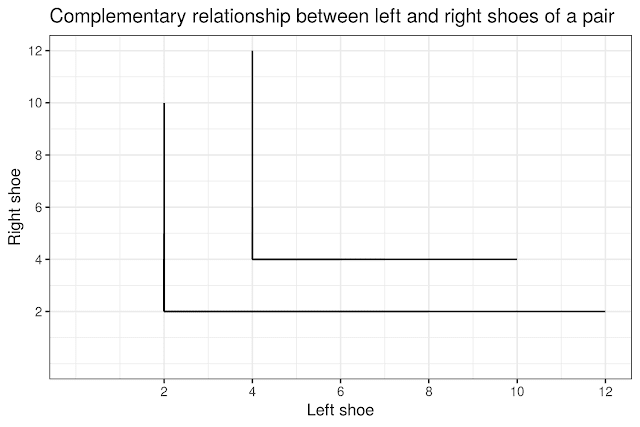Why the indifference curves of complementary goods right angled ?

Why the indifference curves of complementary goods right angled ? Complementary goods means two goods that have their utility (use) together and if separated they have no utility at all! Take an example of pair of shoes. When they are together (right and left shoes) they have utility but if any one of them is lost, the remaining has no use at all. This was all about complementary goods. Let's check this complementary relationship. Suppose we have, Left leg shoe (x) Right leg shoe (y) Utility 2 2 200 Though the utility cannot be measured cardinally we are supposing it here. In above example I have 2 pair of right leg and left leg shoe and from using them I am getting utility of 200. If I increase left leg shoe by one, Left leg shoe (x) Right leg shoe (y) Utility 3 2 200 The utility will not increase as I don't have use of the left shoe